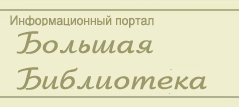Другое : Veronese, Paolo
Veronese, Paolo
Veronese, Paolo
Veronese, Paolo (Paolo Caliari) (1528-88). Italian
painter, born at Verona (from which his nickname derives), but active in Venice
from about 1553 and considered a member of the Venetian school. With Tintoretto
he became the dominant figure in Venetian painting in the generation after
Titian and he had many major commissions, both religious and secular. He soon
established a distinctive style and thereafter developed relatively little. Few
of his paintings are dated or can be reliably dated, so his chronology is
difficult to construct. Similarly, because he had such a highly organized
studio and his output was so large, there can be problems in distinguishing the
work of his own hand.
Nevertheless,
his status and achievement are clear. He was one of the greatest of all decorative
artists, delighting in painting enormous pageant-like scenes that bear witness
to the material splendor of Venice in its Golden Age. Marble columns and
costumes of velvet and satin abound in his work, and he used a sumptuous but
delicate palette in which pale blue, orange, silvery white, and lemon yellow
predominate. He painted many religious scenes as well as mythological and
allegorical works (and portraits), but his penchant was for feast scenes from
the Bible rather than incidents from Christ's Passion. His love of richness and
ornament got him into trouble with the Inquisition in a famous incident when he
was taken to task for crowding a painting of the Last Supper with
such irrelevant and irreverent figures as 'a buffoon with a parrot on his wrist...
a servant whose nose was bleeding... dwarfs and similar vulgarities'.
Veronese
staunchly defended his right to artistic license: I received the commission to
decorate the picture as I saw fit. It is large and, it seemed to me, it could
hold many figures. He was instructed to make changes, but the matter was
resolved by changing the title of the picture to The Feast in the House
of Levi (Accademia, Venice, 1573).
Veronese's
other great works include the delightfully light-hearted frescos (including
illusionistic architecture and enchanting landscapes) decorating the Villa
Barbaro at Maser, near Treviso (c. 1561) and the resplendent Triumph of
Venice (c. 1585) in the ceiling of the Hall of the Great Council in the
Doges' Palace, Venice.
His
studio was carried on after his death by his brother and sons. He had no
significant pupils, but his influence on Venetian painting was important,
particularly in the 18th century, when he was an inspiration to the masters of
the second great flowering of decorative painting in the city, above all
Tiepolo.
Список
литературы
Для подготовки данной работы
были использованы материалы с сайта http://www.ibiblio.org/louvre/paint/
|


